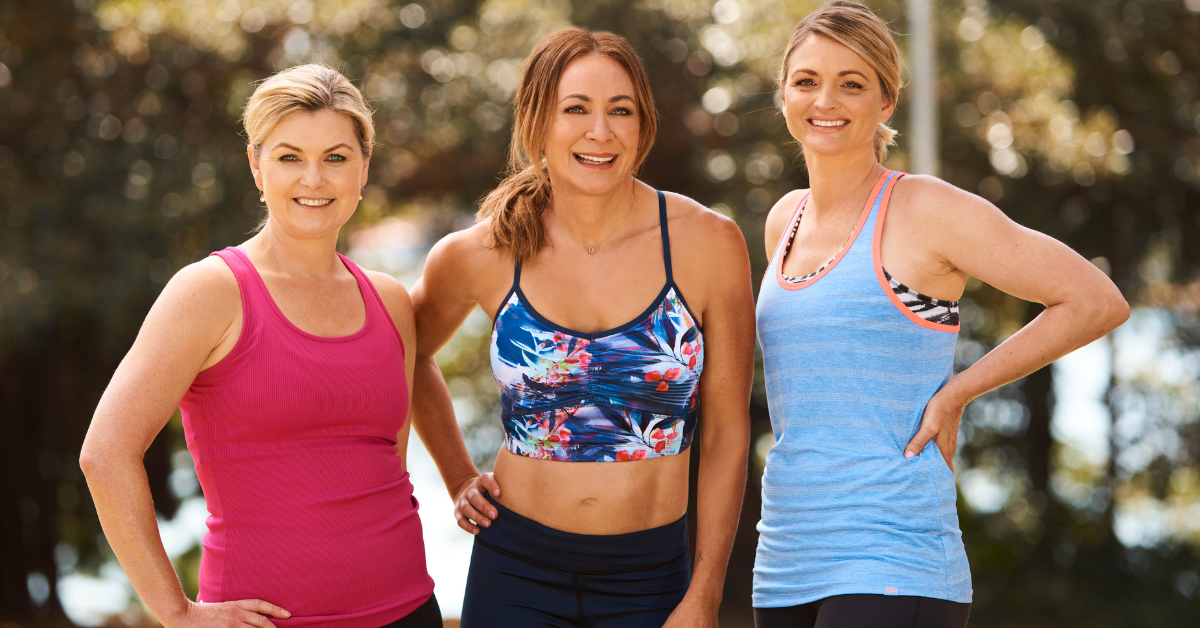“There are more benefits to ocean swimming than I could possibly name,” says ocean swim instructor Andre Slade, “but my favourites are that you’re not following the black line at the pool, you’re swimming at the beach under the sun, and that you can get such a great workout by swimming in and out through the waves.”
Andre’s Bondi-based company OceanFit, trains swimmers of all ages, from absolute beginners to those with the goal of completing a one or two kilometer ocean swim. But Andre says he’s not a “hardcore swimmer”.
“For me swimming is as much about taking a dip, or catching some waves as it is about fitness. I’m not a huge fan of swimming by myself,” he admits – ocean swimming is usually a group activity – “and I don’t need to swim when it’s cold, so in that regard I’m probably best classed as a ‘fair weather swimmer’.”
THE BIG BLUE
Andre’s love of the sea is infectious: “the thing I love most about ocean swimming is that feeling of being connected to something so natural and powerful.
There’s nothing but fresh air and salt water, and plenty of time to let all the worries of the world disappear as you watch the fish swim by beneath you with the sun on your back.”
Andre says he brings this empathy with the sea into his teaching, so his students learn to respect and admire the ocean. “That’s when you really start to understand it and become one with it” he says.
LEARNING TO SWIM OUT
Swimming is an amazing all-round body exercise, Andre explains, but perhaps the greatest benefit is that it’s non weight-baring, so if you’re injured or overweight you can enjoy all the fitness benefits without the stress on your body. “Swimming works your shoulders, arms, core, back and legs…” he says, “in fact, not many muscles don’t get a workout!”
Freestyle is the stroke of choice for most ocean swimmers as it’s the fastest stroke, according to Andre, but side stroke and breaststroke are great for survival swimming when tiredness kicks in, and swimmers should have one of these strokes mastered above all others if they’re taking to the ocean.
“I’ve become a huge proponent of breaststroke in ocean swim events and when cruising in the ocean socially, because your head is above the water which means you can actually see all the amazing natural environment around you” he says.
STROKE OF GENIUS
If you want to start ocean swimming, the first step is to hit the pool and train twice a week, says Andre; “I love the ocean a lot more than the pool, but I know the hard work done in the pool pays off in the ocean, especially when it comes to swimming in big surf.”
But before you hit the pool make sure you’re swimming efficiently. If you’re not sure what you’re doing, Andre’s advice is to see a swim coach and get your stroke analysed and tweaked ready for training.
MAKE A PLAN
There’s no substitute for time spent swimming, says Andre, but don’t just head to the pool without a plan. “You need to follow a swimming program that will ensure you’re getting the right mix of technique, endurance and strength/sprint training as well as making sure you’re increasing your km’s each week,” he says. Ideally, Andre’s tip is to follow a swim training plan that will increase both your aerobic and anaerobic fitness and strength.
“When training for an ocean swim in the pool it’s important to replicate at least some of the conditions you’ll experience in the ocean. Ocean swimming, especially through the wave zone, requires you to be able to swim hard for short distances and dive under the water holding your breath, so mix in short sprints with a short recovery time to mimic this,” he recommends.
INCREASE YOUR FITNESS
Whether you like a group exercise class, boot camp or a run along the coast, try to get in at least 45mins a day of exercise to increase your general fitness, Andre suggests. “You should also ensure you’re strengthening your core, which plays a large part in your stability and will help you when diving under waves,” he says.
SURF SENSE
When you’re ready to hit the ocean you need to first understand how the ocean works and gain the knowledge to swim with it, rather than against it, Andre explains. Take a surf class or talk to a lifesaver, if you don’t already know how to read the ocean currents. Andre calls these skills “surf sense”.
Surf Sense Techniques:
• Conducting a basic beach risk assessment
• Reading the ocean and open water
• Gaging wind, waves and rip currents
• Wading and dolphin-diving
• Efficient negotiation out and in through the surf zone
• Open water swimming techniques
• Forward and rear sighting
And the best way to gain this knowledge? “You’ll simply need to spend more time in the ocean” says Andre.
ANDRE’S TOP TIPS
1. Pick a Goal Ocean Swim Event.
It’s easier to stick to your training plan when you have a goal to aim for and a friend to share the good times. Choose an event with your training buddy, train for it by encouraging each other and then celebrate your success together!
2. Buy all New Gear!
Get yourself into a new swimsuit, wrap on a new pair of goggles (I recommend Vorgee Fuze Missiles from Rebel Sport or other swimwear stockists) and look and feel fantastic as you train and participate in your early season swims.
For more info on ocean swimming visit oceanfit.com.au. To build up your fitness so you can make a splash in the water this summer, sign up to 12WBT now!














